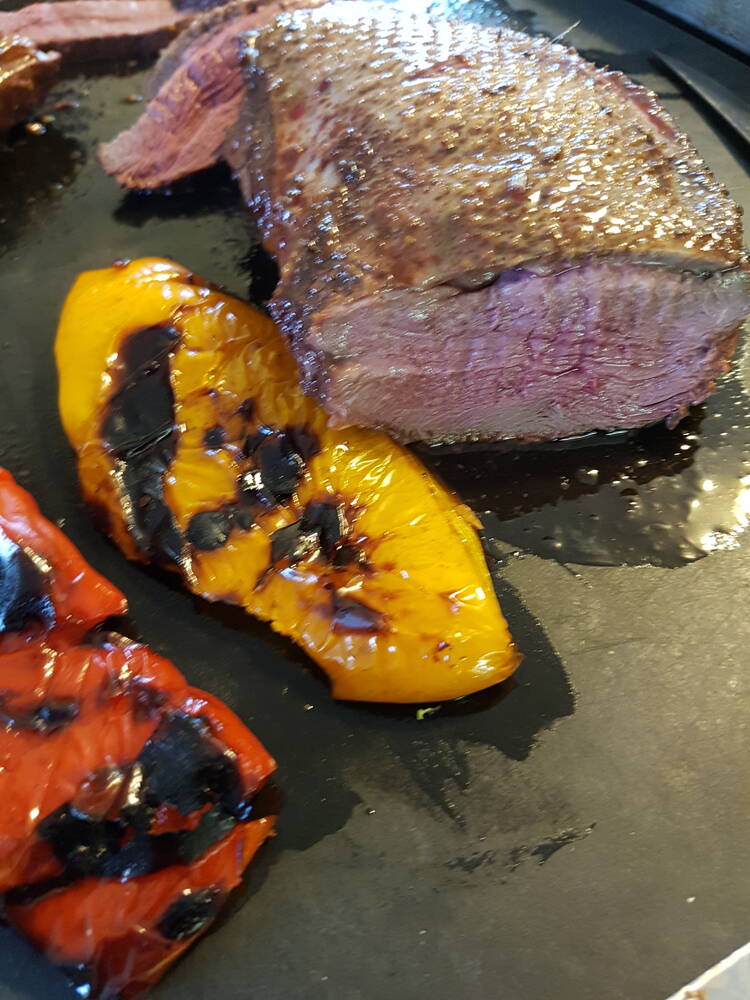Slip these snowflake pillowslips onto your pillow forms to add a little bit of sparkle to those sometimes dreary winter days.
Material for two pillows: 1-1/3 yard (minimum 36-inch width) each of sheer snowflake material and grey lining 1-1/2 yards silver piping Grey thread
2 black Klikit snap fasteners 3/8 inch wide
Wooden spool
Hammer and 6-inch piece of 2×4 Pencil with eraser White chalk
16×16-inch pillow form
When I first sewed this pillowslip I found too much of the pillow form was visible and that the bottom corners stuck out too much. I have modified the pattern to eliminate these problems. As you follow the pattern, be aware of the “snip” marks, the corners and the indent where the back top folds over to become the flap. The measurements are for a 1/2-inch seam allowance.
Read Also

Giant Canada geese have gone wild in Manitoba
Giant Canada geese are seemingly everywhere and can be fine table fare for local hunters, but 70 years ago, they were borderline extinct.
Directions: Front flap:
Cut 32 inches of piping. Open the first 4 inches of stitching at each end of the piping and cut off the rope inside. Sandwich the piping between the right sides of the fabric with 1 inch of piping extending past “snip” mark. Start at the “snip.” Fold the end of the piping back on itself as you start and finish so that when the flap is turned right side out the ends of the piping will be hidden. I found the easiest way to sew the piping in was to allow the regular sewing foot to slip over the ridge created by the piping. If you have a piping foot, of course, use that. Trim the seam allowance around the point of the flap to reduce bunching once it is turned right side out. The “snip” mark is where the side and top of flap meet. Keep the finished top seam of the flap folded inward. At the “snip” free up the material to create the seam allowance for the back of the pillow. Iron the flap for a crisp finish.
Note: Use a tea towel to protect the synthetic materials from the heat.
Front of pillow:
With right sides together sew a 1/2-inch seam across the top. Turn and iron. Remove an inch of rope from each end of the piping. Fold the end of the piping over. The snowflake sides will be facing each other; the right sides of the grey material will be facing out. Start at the “snip” and sew the front, piping and back together, tucking the end of the piping out of sight. Fold the seam allowance in half and stitch it closed for 1 inch to hide the rough edges of the fabric. Trim the seam allowance away for the corners. Turn right side out and stuff the pillow form inside.
Attach fastener:
Once the pillow is stuffed and fluffed to your satisfaction, mark the position for the fastener with chalk (or straight pins). Remove the pillow form. Insert a block of wood inside the pillow. From the inside of the pillow push the points of the fastener through the fabric at the chalk marks. Use the eraser end of pencil to push the points all the way through. Set the stud-half on top of points. With the spool, hold
the stud in place. Hit the spool with the hammer. Repeat until both parts are attached firmly to fabric. Repeat to attach top-half. – Dana Ramstedt is a freelance writer and preschool teacher of 18 years.


















